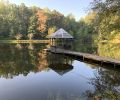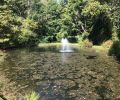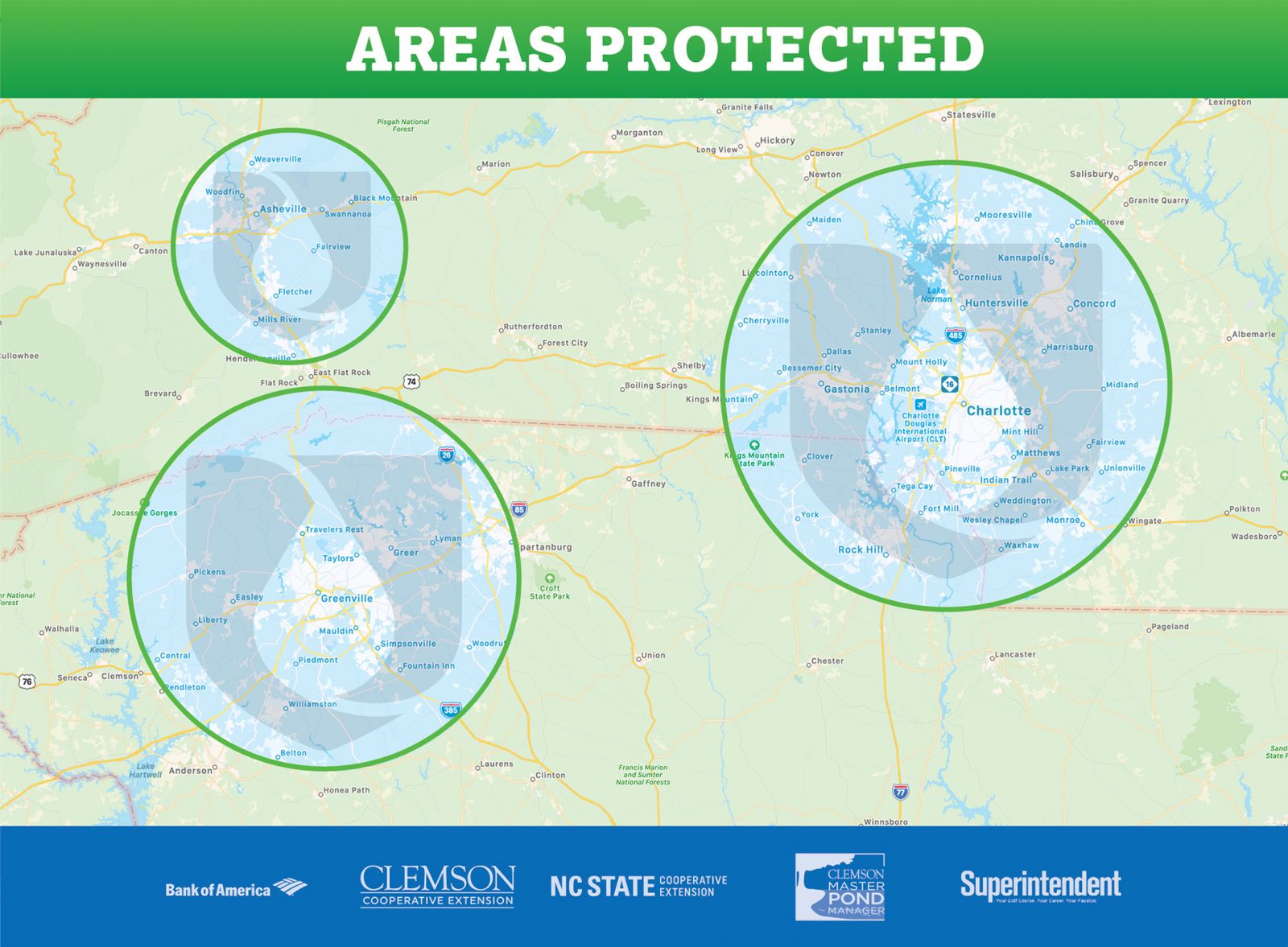If you own a pond or if you work for an HOA, you are probably familiar with pond dye. Pond dye is essentially a food coloring for ponds. It comes in a few shades of blue, and you can pick which color you want based on your pond’s environment. Some people love it; some don’t. Here are the pros and cons and we will let you decide.
All pond dyes work in the same way, by coloring the water a dark blue or blue-green. The absorption and spreading of sunlight by the pond dye reduces the depth of the photic zone a great deal. This restricts submerged plant and algae growth to only the shallowest areas of the pond or lake. “Black” pond dye will not help a muddy pond, though. Only blue dye will penetrate the suspended particles and give you results.
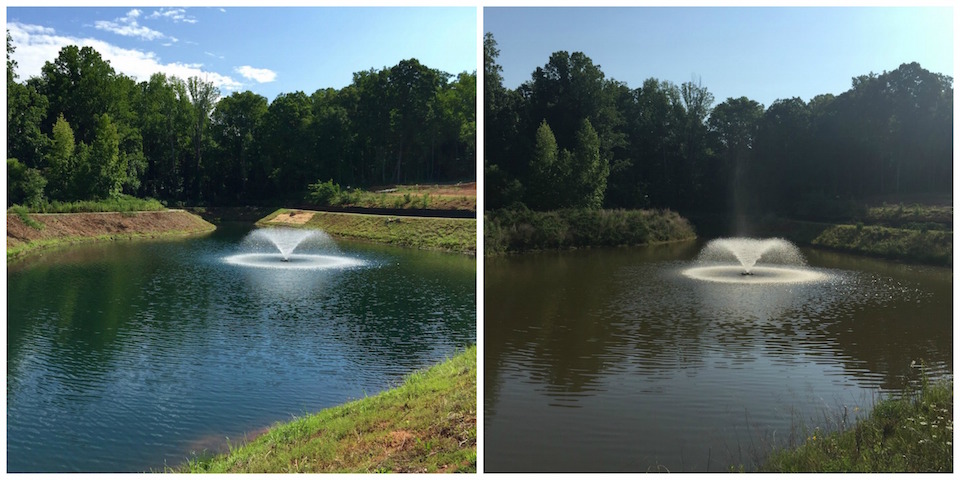
Pond dyes propose an alternative that can reduce plant and algae growth in many ponds. However, dyes do not inhibit the growth of all aquatic plants by slowing the sunlight from fueling weed growth. They are recommended for use on submerged plants, such as pondweeds, watermilfoil, naiads, coontail, and elodea. Dyes also inhibit the growth of filamentous algae, mat-forming algae, and single-cell planktonic algae.
Not all pond dyes are created equal. Some brands are highly diluted making the price much more than a high-quality dye. Black dye is the choice color for PGA golf courses.
If a pond has a spring or high flow through streams, pond dye does not work as it dilutes the pond dye too quickly. Stormwater ponds typically have high turn over of water. As a general rule, the pond needs to have less flow than 50% of the pond’s volume in one month to be an affordable method.
One concern a member, Angie, had with adding dye to her recreational pond was that it wouldn’t be safe. If it can kill aquatic weeds and algae, surely it could harm other things. Her family likes to swim, boat, fish, etc. and she was scared the fish wouldn’t be safe to eat, and the dye would hurt their skin. We explained to her that the dye is food grade and couldn’t hurt anything. However, the downside is too many aquatic weeds blocked at one time too quickly from shading with dye can cause fish kills from rotting weeds depleting oxygen.
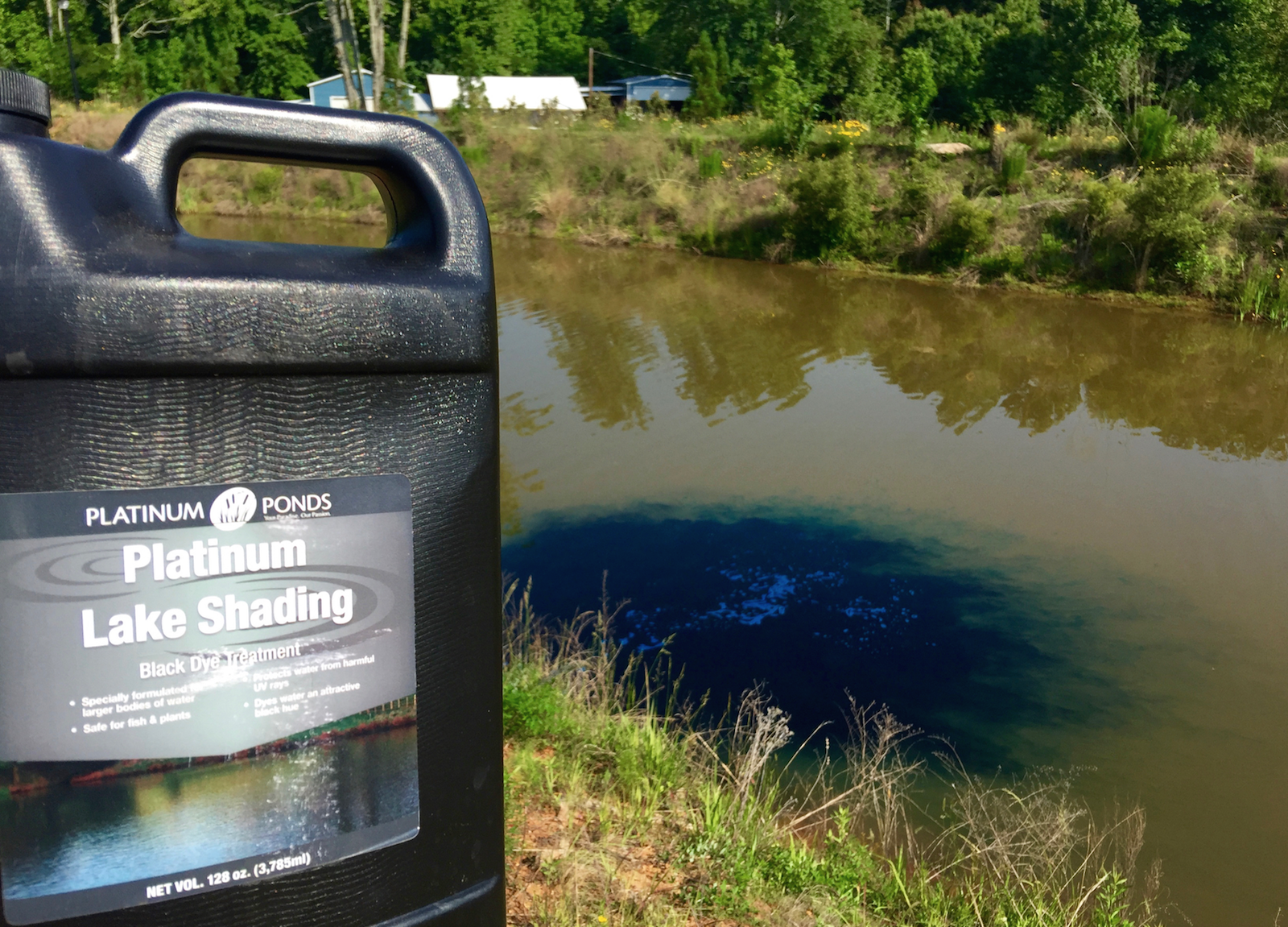
PROS
Pond dyes offer an alternative that can reduce plant and algae growth in ponds.
Adding dye to the pond will change the color from brown or green to your choice of color
Professional quality dyes can be purchased online.
Pond Dye can help hinder fish predation. Blue Heron prey on spawning game fish and valuable Koi.
Pond dyes work in the same way, by coloring the water a dark blue or blue-green. The absorption and spreading of sunlight by the pond dye reduces the depth of the photic zone a great deal. This contains submerged plant and algae growth to only the shallowest areas of the pond or lake.
Administration of pond dye is as simple as pouring the dye into the water. It will quickly disperse throughout the pond, usually within a few hours. Because the dye will diffuse by itself throughout the water, there is no need to spray or spread the application out yourself.
Water from ponds that use dye can be used for irrigation of all crops and watering livestock or pets as well. Fish from dyed ponds are in fact safe to eat. Recreational swimming is safe too. Swimming in dyed ponds once the dye has diluted to the proper level will not result in stained clothes, skin, or hair.
Dyes also inhibit the growth of filamentous algae, mat-forming algae, and single-cell planktonic algae.
Most dyes that are chosen for aquatic use are considered environmentally friendly and non-toxic, which means that they will not harm birds, reptiles, mammals, fish, or turfgrass.
Dyes can be used for bird control.
One reason people use dye in their ponds to make their shallow pond look deeper.
Dyes do not hinder the growth of all aquatic plants. They are recommended for use on submerged plants, such as pondweeds, watermilfoil, naiads, coontail, and elodea.
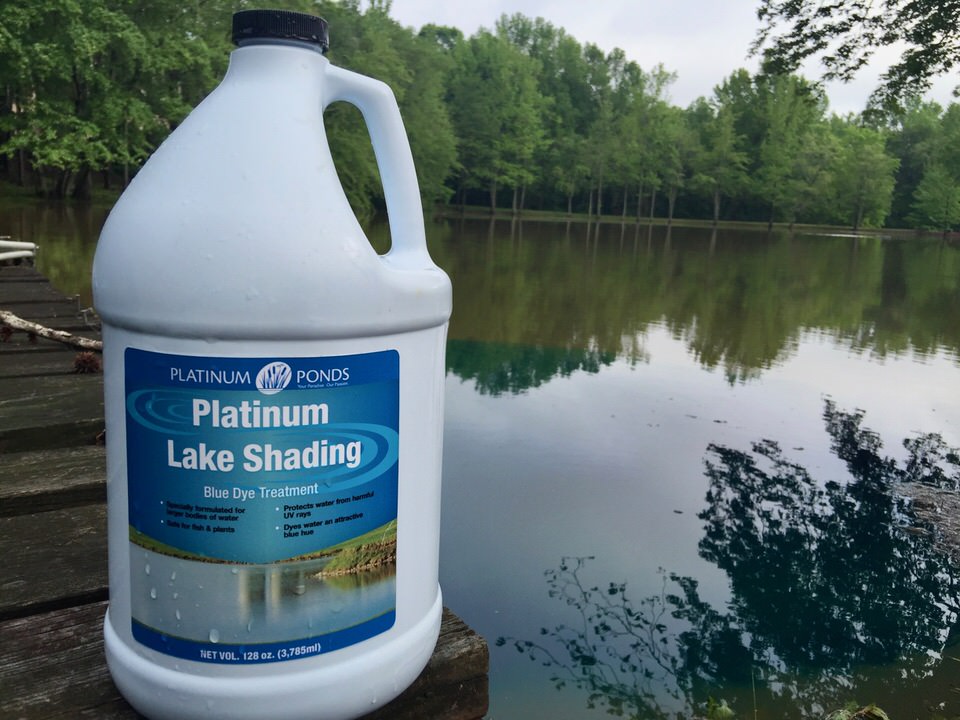
CONS
Use gloves and protective clothing when applying because undiluted dye on skin or clothes will stain.
The first spring application will begin to fade within a month or two as runoff and rain dilute the dye, sometimes even earlier. The color is gradually lost due to photodegradation and biodegradation since the dye is an organic compound. If “touch up” applications are not made, it will lead to a late summer aquatic plant or algae problem. Keeping up the correct level of blue color throughout the growing season can eliminate a late-season plant problem.
The pond owner should routinely evaluate how much blue color is present in the water. This can be done by measuring how far down a Secchi disc (white weight on a string that measures turbidity) can be seen as it is dropped down in the water. The first evaluation should be taken forty-eight hours after the first application in early spring. This will work as the baseline color level for the suggested application rate.
In the south, some people put cotton seed meal in their pond that makes water cloudy/ murky water- farmer supply store. Has to be done in spring
About every two weeks, you should re-measure the depth at which the white object disappears. Once the measured depth increases by about 25%, more dye should be added to bring the measured depth back to the baseline measurement.
Dyes do not hinder the growth of emergent plants, such as cattails, and are not efficient in managing floating-leaved plants (duckweeds and water lilies) once their leaves are floating on the surface.
A huge weakness in the use of aquatic dyes is the water exchange rate correlated with the pond. Ponds with an abundant watershed get a significant flow during rain events, and it becomes hard to manage the required blue color to restrain plant growth.
The extra expense of the continual addition of dye to compensate for dye lost.
Pond Dyes aren’t pesticides and shouldn’t be viewed as an alternative.
Black dye is not effective in muddy ponds. Only blue dye will penetrate the suspended particles and give you results.
Because it is blue, you will want to store it on a concrete floor that you wouldn’t care about if it did get stained. If you store it on carpet, and it leaks, it will be extremely hard to clean up, even if it is concentrated.
You may need to increase dye amount the more you use it.
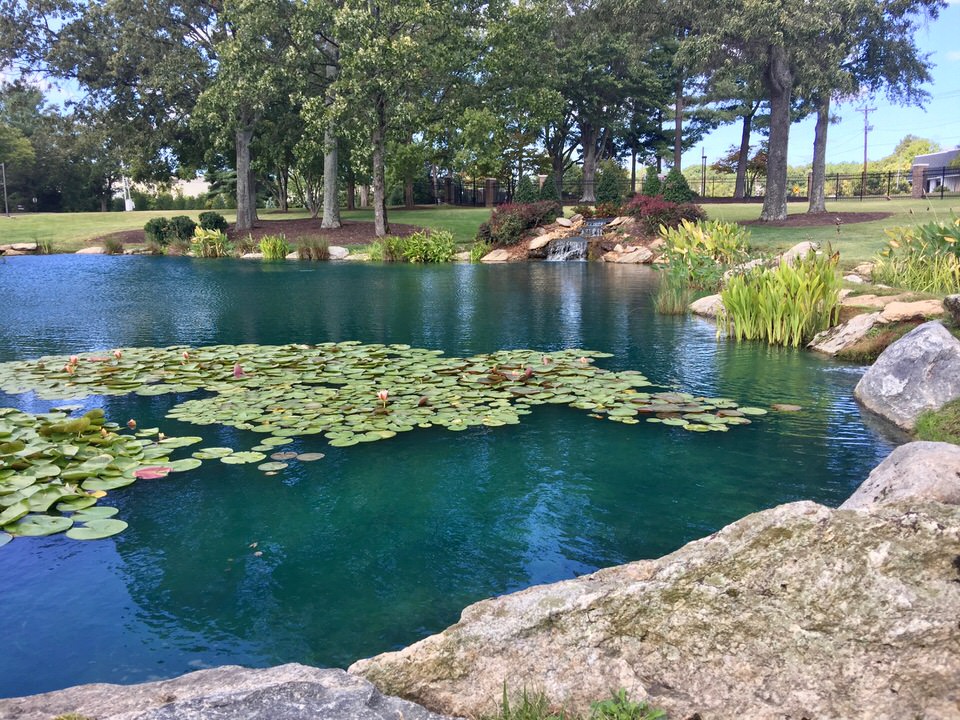
NEUTRAL
Aquatic dyes must be implemented in early Spring (March and April) to be the most efficient for aquatic weed and algae control. It is still better to put in the dye later than not at all. This is the key to controlling aquatic weeds is to prevent germination: limit early season growth.
Aquatic dyes are most efficient in ponds receiving little inflow water, even during a heavy rain. Dyes are very effective in excavated ponds and stormwater ponds that receive little runoff water.
Aquatic weeds and algae cause extensive problems for many pond and lake owners
Blue-Green Pond Dye: Aquashade is an ocean like color. The addition of yellow dye increases light blocking ability. Black Pond Dye: Blocks light very well, looks nice as a reflection pond and is an efficient bird blocker.
Submerged aquatic weeds and plants and algae need nutrients and sunlight to thrive just like your lawn and your trees. Nuisance pond weeds can grow only where adequate light reaches the growing area of the pond or lake. This zone is called the photic zone.
Below the photic zone, usually in deeper waters, plants cannot grow to nuisance levels. Factors affect how deep the photic zone extends, including plankton density, water color, and even wind.
Now serving Greenville SC, Spartanburg SC, Asheville NC, & Charlotte NC areas.
Get started. And become a member today!
Not in our service area? Schedule a 30 min phone consultation for only $99 anywhere outside of our service area in the U.S.A.


